Wild Carrot
Although the leaves and roots of Wild Carrot are similar to Hemlock the flowers and forked leaf bracts under the flowers will save confusion with Hemlock and other Umbellifers. The carrot itself is tough and stringy but has a strong carrot flavour so is best cooked in soups or stews and removed before consumption. The younger roots from the first years growth are not as tough but are still quite fibrous.
| Hedgerow Type | |
| Common Names | Wild Carrot, Queen Anne's Lace |
| Scientific Name | Daucus carota |
| Season Start | Dec |
| Season End | Dec |
Leaves
The leaves are pinnate and generally less triangular in overall shape than some of the other fern leaved umbellifers. The upper surface is smooth, the underside is covered in hairs. The leaf stem is also covered in hairs.
Flowers
Has an umbel of white to off white to pink flowers with five petals and usually one to five small flowers in the middle of the umbel which are dark red to almost black. This is a key identifying feature as well as the forked leaf bracts which grow beneath the flower. As the flowers go to seed the umbel closes in on itself and can snap off and blow around like tumbleweed, dispersing its seeds.
Seeds
The small double seeds are oval and slightly flattened on one side and covered in tiny hook like hairs.
Roots
Off white and carrot shaped, although depending on the soil, stones and environment they are growing in can be forked and twisted and very woody and fibrous. Even the tiny roots of young plants are fibrous and tough.
Habitat
Wild Carrot is mainly a coastal plant in hedgerows, waste ground, fields and meadows although it can be found inland but is less common.
Possible Confusion
Could be confused with a few Umbellifers, particularly Hemlock, pictured, so great care must be taken when foraging for this plant.
Smell
The root smells strongly of carrot.
Taste
The root tastes of carrot but should be used as a flavouring and removed before consumption as it is very tough and fibrous.
Frequency
Very common near to the coast, less so inland.
Collecting
It is better to identify Wild Carrot when it is in flower due to its similarity to Hemlock and return next year if you want the slightly less tough younger roots.
The flowers can be eaten raw or battered and deep fried.
The leaves can be used in salads.
The seeds can be used in breads or soups and stews.
Medicinal Uses
Wild Carrot seeds and the seed oil have many claimed medicinal properties but not parts of the Wild Carrot should be consumed by pregnant or breastfeeding mothers.
The leaves of Wild Carrot can cause phytophotodermatitis where sap touches the skin and is then exposed to sunlight or UV rays and can cause blistering and irritation.
Other Facts
The common name Queen Anne’s Lace supposedly comes from a story of James I of England’s queen consort Anne pricking her finger while creating lace and leaving a drop of blood on it which would resemble the white flowers with a red to dark red-brown flower in the middle.
The Wild Carrot is the ancestor of the carrots we know and eat today and is thought to have originated in Afghanistan before spreading to Europe and the Americas. The orange carrot was first cultivated in the Netherlands in the 17th century.


 (8 votes, average: 4.25 out of 5)
(8 votes, average: 4.25 out of 5)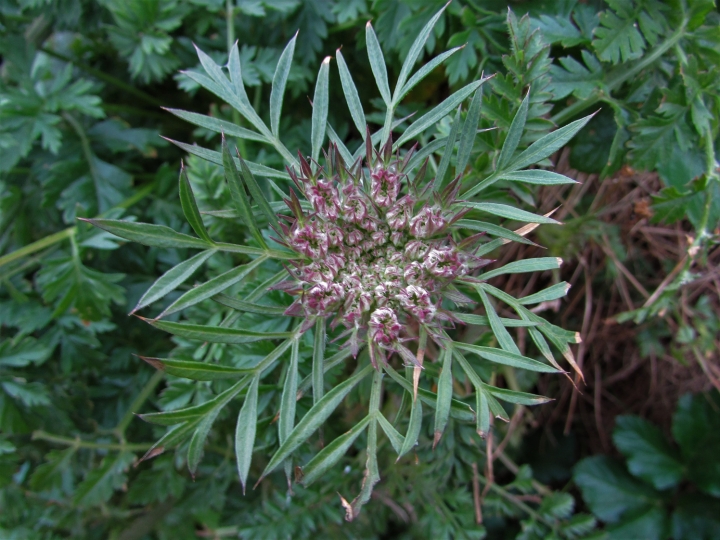
















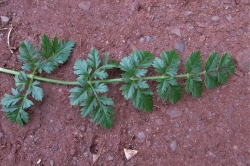
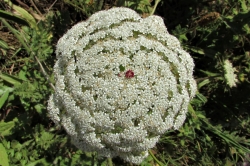
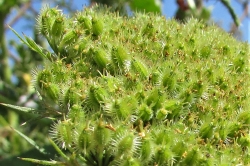
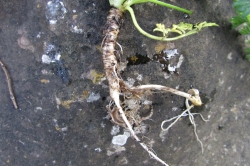
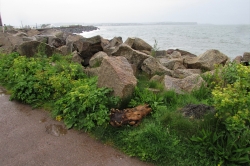
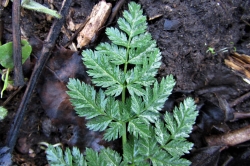





5 comments for Wild Carrot
Hi, your site was useful in confirming my identification of wild carrot, which I have here growing in my garden. I would just like to suggest though, reading through your info text, that you should encourage people to perhaps gather seeds and grow a couple of wild carrot plants ( among others!), in their garden if they have one, rather than destroying the whole plant just to eat the root which is according to you, virtually inedible! On observing this wonderful flowering plant the past days, I have noted countless insects, most of which I had never seen before, excitedly feeding on the tiny flowers. Having a garden and watching the activity around plants is undoubtedly the beat way to educate oneself to the fact that we should share the plants where possible and not destroy them for such an unnecessary reason as here stated. Like with Evening Primrose, I would never dream of using the beautiful, sculptural roots fir eating, when I see how the insects need and enjoy them until the birds come and feast on the oil rich seeds…. after which in winter I finally pull them up, dry them and use them as support sticks for wild peas. There are so many uses which one can share without destroying beautiful plants for the insects and birds.
I really like your comment about how we should keep wild plants for insects and birds. I have been foraging dandelion leaves and flowers and stopped doing it as I watched starlings and goldfinches collecting them for their nests. I have not seen wild carrots yet but would like to grow some in my garden one day.
Very knowledgeable advice and I’m sure many of us reading this (as I attempt to order some seeds and think about getting my soil ready for a suitable sandy spot for it).
I’m hoping to attract moths /butterflies after discovering an interesting article on the Sussez emerald which apart from the hop area of Sussex, has also been spotted intermittently in Ainsdale and Southport’s coast, Liverpool.
Thanks very much.
I’ve been seeing many of these plants along the roadsides and grassy nature areas in the city of Bristol this week, at the start of August. The tightly curled-up seed heads among the still white, flat umbrella-shaped flowering heads are very noticeable. If I can defend the inclusion of this plant here on this site, as it is about wild food, I think it’s really helpful to know how to understand and use/consider this plant as a food, but that does not mean that this site is saying that we SHOULD use the plant ! It’s just for information and everyone’s discernment. Thanks for the information.
I live in northeast Arkansas and I just found the wild carrots growing I an abundance next to my garden. What a great find and surprises. There’s new growth and second year growth. I will be looking at this plant threw different eyes and trying to preserve it now